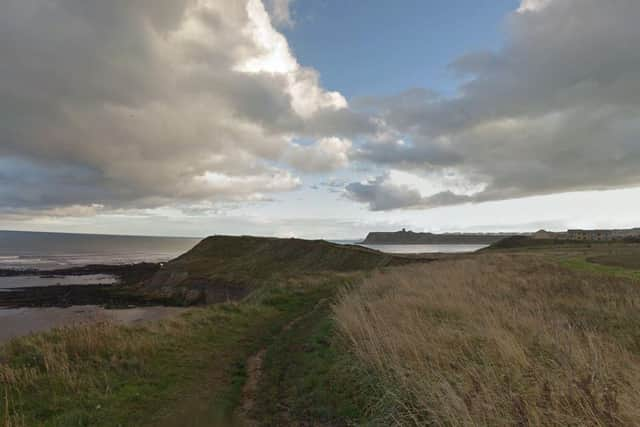Rising sea levels will dramatically speed up rate of erosion on rocky Yorkshire coastline, scientists claim
A team from Imperial College London say up to 22 metres could go at Scalby in North Yorkshire by the end of the century - a rate of around a third of a metre a year.
The erosion could be between three and seven times today's rate and potentially up to a tenfold.
Advertisement
Hide AdAdvertisement
Hide AdRocky coasts - which make up over half the world's coastlines - are usually thought of as stable compared to sandy foreshores and soft cliffs.


However the study, based on various greenhouse gas emissions and climate change scenarios, finds they are likely to retreat at a rate not seen for 3,000 to 5,000 years.
The researchers looked at past and present cliff retreat rates on the coastlines near Scalby and at Bideford in Devon, finding that by 2100 they are likely to retreat by 13 to 22 metres and 10 to 14 metres respectively.
They claim their findings are a “stark warning” that people need to plan for the future – or face the loss of billions of pounds worth of homes and infrastructure.
Advertisement
Hide AdAdvertisement
Hide AdSenior author Dr Dylan Rood, of Imperial's Department of Earth Science said: "Some rock cliffs are already crumbling, and within the next century, rock coast erosion rates could increase tenfold. Even rock coasts that have been stable in the last hundred years will likely respond to sea level rise by 2030."
At the other end of Yorkshire, the soft boulder clay clays of Holderness make up Europe's fastest eroding coastline. They are already retreating at an average 4 metres a year, with dozens of people losing their homes to the sea in recent years.
Scientists believe sea levels could rise one metre by 2100 unless greenhouse gas emissions are reduced.
For the study scientists collected rock samples and analysed them for rare isotopes called cosmogenic radionuclides (CRNs) that build up in rocks exposed to cosmic rays.
Advertisement
Hide AdAdvertisement
Hide AdConcentrations of CRNs in rock reveal how quickly, and for how long, the rock has been exposed, reflecting the rate of erosion and retreat.
The data was combined with observed coastal topography to calibrate a model that tracks the evolution of these rock coasts over time, before comparing them with rates of past sea level change dating back 8000 years. They found that the rate of coastal erosion on these two sites has closely matched the rate of sea level rise.
The researchers claim this to be clear evidence of a causal relationship between cliff retreat and sea level from which future forecasts can be made.
They say rocky coasts are likely to respond in similar way around the world because the rock type is common globally.
Advertisement
Hide AdAdvertisement
Hide AdLead author Dr Jennifer Shadrick said the study didn't account for the effect of increased storms, which may become stronger and more frequent in the future.
That would increase the rate of erosion beyond the forecasts.
She said: “The findings are a stark warning that we must better adapt to coastal retreat or face the loss of the people, homes, and infrastructure that call coastal areas home.”
--
